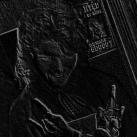Leaderboard
Popular Content
Showing content with the highest reputation on 12/18/2022 in all areas
-
I am also curious about the library! I have never used sound libraries, just soundfonts, and of course the result is nothing compared to this. Liked and subscribed, BTW. • This score has very well made contrasts, every motive and section is beautifully connected to each other, the flow is never interrupted and it actually makes you imagine the physical waltz. I am honestly impressed mate. • There is A LOT of power even in the calmer sections, for example near min 4, but one can in fact note that since the beginning there's been an overall build up on intensity. • The beginning is 100% of my taste and the ending was very, very satisfying. Thank you for sharing this, really. Would you mind if I shared your work in my social media? You clearly deserve more views (many others here who produce EPIC works like yours as well). For that purpose I'm putting you on the "Our picks", hopefully you don't mind either (if you do just tell me). What a good piece, I've already listened to it thrice and cannot get enough of it. Looking forward to listen and read any of your next pieces! Kind regards and hats off, Daniel–Ømicrón.2 points
-
I love the macrotonal form/scheme of this set of waltzes. You go from F major to Bb major to Eb major and then all the way back. I guess it's a kind of there and back again type of story or form. Emotionally it is very lovely and sweet and I don't hear any angst or bitterness mixed with that sweetness. Yet you say you composed this "cheerful waltz" while being heartbroken - maybe, like Mozart you just love to compose beautiful music regardless of how you feel? To find something to critique, I felt like each of the waltzes had the same unchanging "cheery" quality to it which I felt could have used some kind of emotional contrast. Or maybe make one of them much more quiet and delicate than the rest? Also a minor key thrown somewhere in there could have worked too. But I like it as is just fine. Thanks for sharing!2 points
-
I love C# minor because Beethoven's op.131 is in the same key. Beethoven is famous for his c minor works, and I remember in a book an author said that C# minor is a "transcendental version of C minor, nobler and transfigured". I love to have minor keys for dances since as you said, it adds intensity and vivacity in a folkore way. Agree! Btw, I misread Peter's comment I see it maniac, lol! But either manic or maniac will fit for me! Henry2 points
-
I don't know, I am lately pretty attracted to that key in particular too, lol. Well there's not much more to add that other guys didn't. As @JorgeDavid said, it flows. Despite being in C# minor, it sounds full of joy, the occasional stress on the minor chords (which at first glance I'd say is less common than the use of E major) adds intensity but not melancholy, darkness, nor anything similar. It sounds noble, and I particularly didn't feel issues regarding parallelism perhaps due to the brief time the piece lasts. I agree with Henry on what he said about dynamics, but as you say, possibly more sections would have dissipated this "issue". Overall, a powerful and noble score. Kind regards!!2 points
-
This was my entry for the National Young Composers Challenge. I did not end up winning, but the judges enjoyed it, particularly the introduction. I will definitely be participating again for next year. This was also my first test of the new MuseSounds, and I am very excited about it. I was quite impressed with the realism of it, though I don't really like the trumpet all that much, as the dynamics are inconsistent. Feedback is definitely appreciated, especially since I am planning on expanding the material into a full symphony.1 point
-
Here is a holiday cover of Jack's Lament for piano, violin and cello. Although the piano and violin are pretty true to the original melody I created the cello harmony from scratch. Thoughts?1 point
-
Hello!! I wrote a ballroom waltz titled "The Color of Your Eyes" inspired by none other than: her brown eyes lol. You can never go wrong with a cheerful waltz for any occasion right? 🙂 Let me know what you think and I hope you like it! Video: https://youtu.be/ieZsZ04Rks0 Score: https://drive.google.com/file/d/1Yef2wzSqjKo38y8tS92QPGPCAHKVzrHb/view1 point
-
Thank you for your comment Peter! I am glad you enjoyed it! In a waltz for me, angry or bitterness is usually a nono because in a ballroom waltz (I know a lot of waltzes have parts with those emotions) I try to keep that away because when dancing in those old days, for me its about the dance mood and spirit and joy a piece can give. So I try to include those expressive moments in a more cheerful way, like in 1A or 4B. I think how I feel affects how I write, but I kinda manage to shift those emotions in a way they fit with the overall mood. I do use minor keys, but I prefer including major ones most of the time. I think that is just me hahaha, nothing against minor keys and especially D minor. I love D minor. I'll give variety to the next piece keeping that in mind. Thank you again!!1 point
-
Love this! I'm contemplating writing a waltz movement for a string serenade. Along with the scores to some Strauss waltzes, this is going to be a study piece for me. I can't really compliment it more than that!1 point
-
Huge work, nothing to add. The color and the overall structure is quite good.1 point
-
I was just listening to some of the dances I've composed when I realized that I don't yet have a Sarabande written so I decided to write one! I wrote this in basically like two days on paper. A Sarabande is a slow dance originating in Spain. It's usually in binary or variations form, without any pick-ups, in 3/4 or 3/2 meter and stresses the 2nd beat. I hope you enjoy this one as I had fun writing it! I've been told it modulates somewhat unexpectedly sometimes - but I didn't intend to keep it strictly Baroque by any means. I just wanted to preserve the dance rhythms and write something that could actually be danced to. Thanks for listening and I'd appreciate any feedback you're willing to give!1 point
-
1 point
-
A maniac is called that because they are manic, or can be said to have mania, which usually alternates with states of depression after one or more weeks of mania (in bipolar disorder). I just hope you don't ever have this slump! You are a very active member as evidenced by this: (and I hope you continue to be so enthusiastic) Even at the height of my posting activity, I only ever reached about 30 reputation points per month! And I thought that was a high number! LoL1 point
-
I see! That's also a good choice. For me a 2 minute piece will cost me a week, lol! It's always hard for me not to overthink it. I mainly use software to compose but also use notebook to jot down inspirations and ideas. Using notebook definitely pushes my progress a little bit faster. I reviewed this during midway of composing, after finishing an exhausting but quite miraculous passage. It really helps my mind to rest! I really wish my activity is maniac earlier. I was lucky enough to discover this amazing forum though, since I really learn so much by reviewing pieces! And I think every posts here should be reviewed, since they are products through diligence and composers always want to have others' thoughts, no matter good or bad. (Also I am paid as a reviewer, lol!) Henry1 point
-
LoL I didn't feel like I was composing the piece at breakneck speed or anything, and it is a relatively short piece that didn't require much discrimination. I think I also am not distracted by sound and listening to my music as I'm writing it so it cuts down on listening time and I can just focus on writing (since I write on paper but that can also have its drawbacks). I wanted to keep the 2nd (or 3rd) beat of each bar heavier and stressed because the style of the Sarabande dance is to stress one or both of those beats and I did that through trying to linger the rhythm on those beats a little bit by using longer note values (and double dotted rhythms). You're right. Maybe if there were more sections to the piece, like if I returned to the A material after the B (like AA BB AA) then I could have used different dynamics for each repetition of each section. Thank you for the compliment and for your review! I love your almost manic (dare I say! LoL) level of activity with which you review pieces on here! 😁1 point
-
Lots of fun ... Let's dance! What library are you using ... I found the balance among the instruments somewhat lacking in tone/texture ... which does not do justice to the music. Mark1 point
-
I know some of the aforementioned ones but I often listen to this cool dude, he's top to me and I am grateful of his work: • Gamma1734 - YouTube Adding some more that some of you might find cool. I am not sure if they fit since they don't talk about music, they just play it. I honestly don't usually watch music theory videos nor music-related videos, just music: • Jonathan Young - YouTube • Caleb Hyles - YouTube • CharlesBerthoud - YouTube • Zander Zon - YouTube • Listen to musical notes - YouTube • The Flaming Piano - YouTube These ones are smaller but I find their content nice: • María Laura Del Pozzo - YouTube (in Spanish) • pianothings - YouTube (Impressive format) • Richard Noel - YouTube • AM Valkyrie - YouTube • Romano Benetello - YouTube • Michael Ashjian - YouTube • Charles Richmond Davis - YouTube • Duo Pianistico di Firenze - YouTube • nickariondo1 - YouTube Many YC members have channels too! ♫ Henry Ng - YouTube ♫ Sean Brown - YouTube ♫ Theodore Servin - YouTube ♫ TD MUSIC - YouTube (Tom Dahlemburg) ♫ ComposedBySam - YouTube ♫ Brandon Schwab - YouTube ♫ Michael Bates - YouTube (And I'm sure I'm leaving a lot of them out but these are the ones which came to my mind right now) And some unknown pianist that just appeared in my feed lol: • Франсис Кръстева - YouTube Kind regards!!1 point


.thumb.png.8b5b433a341551e913a34392660bc95b.png)





